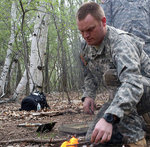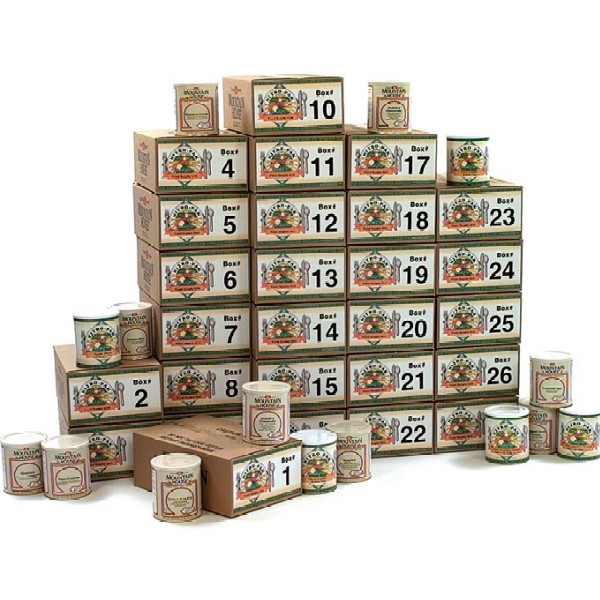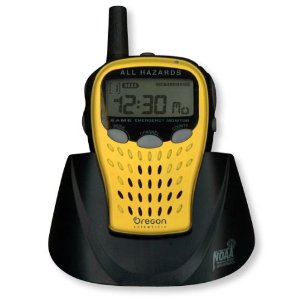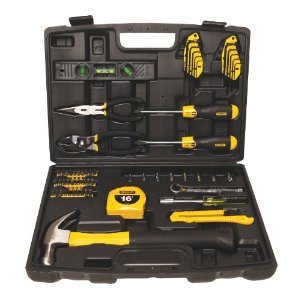Click The Button & Like This On Your Facebook Page! |
SHARE THIS Awesome PAGE With Your Buddies On Twitter! |
Emergency Preparedness
Survival Supplies
Survival Foods
Survival List
Emergency Food Storage
First Aid Online
72 Hour Kits
Solar Energy Systems
Storm Shelters
Survival Food List
Disaster Survival Blog
Shooter Family Survival Forum
Here Is That, Which You Will Find, ON THIS PAGE:
(find more topics below, after the wonderful video)
ACCUMULATE YOUR OWN SUPPLY OF
DELICIOUS MRE MEALS! - CLICK ON THE IMAGE NOW!
Q: Which is the better storm shelter; one that is built from the ground up, or one that is pre-fabricated?
A: Prefabricated units are simple and easy to install. Factory built and water tight, installation is consists of a back hoe diggin out a dimensionally appropriate hole in the ground and havin the module lowered into place.
The excavated soil is put back in place and the process is done. Electricity can also be wired to the unit to provide lightin.
By buildin on from the ground up, the process takes much longer and the stability of the unit isn't factory tested. Although some may argue that makin one yourself is cheaper, more time is invested into the project with the uncertainty of the unit withstanding harsh weather conditions.
Also, ground-up units have a reputation for bein easily infested by bugs.
Q: Can a tornado pull a storm shelter out of the ground?
A: No. Unless your storm shelter is something above ground (like a oil drum), you are very safe below ground. It may be likely that a tornado could pull off a door, staircase, or antenna, but the shelter itself s very safe.
Q: Is it possible for the wind to do any damage to my storm shelter?
A: If the shelter is underground, then no, no wind can do any damage to it, aside from displacing the soil packed in above it.
No above-ground shelter is safe against a stron enough tornado. Even if you built a storm shelter, concrete, reinforced with steel, a tornado could cast a big heavy thin at your whereabouts, and smash.
Q: How would you stop a leak within a metal storm shelter?
A: Cut the spot out, including the rust around the area, and then fill the spot in the car putty. Once dry, paint over the spot with anti-corrosion paint. You can also use tar. For example, roofing tar would work because it hardens but stays flexible.
Q: What should I stock my shelter with?
A: Some of the basics:
Weather radio (click on image)
Whatever you order, through this page, goes to the benefit of the Tru University, and its supporters!
Bottle water (click on image)
Canned foods (click the image)
Dry foods (click the image)
Cell phone (click the image)
Emergency radio - (click on image)
Heater (click on image)
Emergency tool kit - click on image. Be sure to read the users' reviews.
Watch also the video at the top of this page, for a greater number of suggestions for you.
Q: Would I run into any problems if I plant a garden above my storm shelter?
A: No, you should have no problems at all (no bugs, roots, etc.). The average storm shelter is at least 4 feet beneath the ground.
FIND A BUILDER FOR YOUR STORM SHELTER
Question: Where can I find someone to construct/sell a storm shelter?
Answer: If you're particularly handy, you could rent a backhoe and construct one yourself. If not, you can consult the ads in your local yellow pages or look within the yellow pages.
If you are in the USA, here is a website linked for you.
Put in your zip code.
Pick "Additions & Remodels"
Pick "Outbuildings & Structures"
Pick "Shelter Or Outbuilding - Build"
If you are outside, of the USA, use a searchin engine, with the searchin term, "storm shelter builders" plus the name of your whereabouts, such as "storm shelter builders suffolk" or "queensland storm shelter builders".
Tornado Preparation and Recovery
Before a Tornado:
• Purchase an emergency radio-Bein informed plays a key when preparing for a tornado. By havin an emergency radio, you will be able to keep up to date about tornado sightins, path, and possible reoccurrin strikinss.
• Area Wide Warnin System- Be conscious about the local tornado alert system within your area, whether it be loud speaker, siren, or local news broadcast.
• Thunderstorm Warnins- Tornado warnins are normal the first sign of a tornado, and learnin the differences between watch, warnin, etc., can help you prepare for a possible touch-down accordinly.
Tornado WATCH means a there is a possibility of a tornado
Tornado WARNIN means an actual funnel cloud was spotted
Before a tornado the sky will be an eerie greenish/black color, havin fast-movin clouds
Some tornadoes to not have a distinct funnel, look for flyin debris
• Tornado Emergency Plan- Whether livin by yourself, with family, or friends, havin a plan which everyone is aware of is important for insurin proper preparation takes place quick and easy without worry or frustration.
• Emergency Plan Practice- Havin a plan is important, but practicin it is just as crucial to insuring safety.
• Important Document Storin -- Makin sure important information, lore, files, and contact information are in a plan which will endure a tornado is crucial when beginnin steps towards recovery once it is safe to rebuild.
• First Aid Kit- Havin a fully stocked first aid kit is important for handlin injuries in case they should happen, and goin to the hospital isn't an option.
• Utilities- Shuttin off utilities can have an incredible impact on the aftermath of a tornado.
With water, heat, and electricity properly shut off beforehand, rebuilding can becoming a faster, simpler process, while the risk of fire or other damages, scathe, are greatly lowered.
Durin a Tornado:
At Home:
• Get to the lowest part of the buildin, weather it be basement, storm cellar, or ground level. If at ground level, stay within bathroom or closet
Best places to hide are storm shelters, basements, or under stairs
Any place away from windows, with many walls between you, and the perimeter of the buildin
Bathtub, closet, or under a sturdy table
Use heavy blankets, or a mattress, to cover yourself, from flying glass and other thins
Your place for shelter should be picked beforehand, and it should be well known
• Get away from windows
• Get to middle of room
• Get under piece of steady furniture, and try to cover body with blanket or mattress
If In Another Building, Like Department Store Or School:
• Get to basement, hallway, or lowest level
• Avoid places with large rooves, such as stadiums and auditoriums
• Get under sturdy furniture
• Protect head/neck with whatever is available, or hands and arms
If Outside:
• Get inside a buildin, if possible
• Lie in ditch or lowest part of ground if shelter of any kind isn't near
If In a Car:
• Do NOT try to drive
• Find shelter in nearby buildin
• If no shelter, find lowest part of ground and lie down
• Do NOT stop under a bridge, nor an overpassin, if you judge, or see a tornado may be comin. The wind's speed actually rises anywhere there is a restriction.
The whereabouts, under bridges, and overpassins, restricts the air and it will speeden it up, and cause even more scathe, to anythin in the whereabouts.
After the Tornado:
• Check for injuries.
• Listen to follow instructions given by local officials and emergency management personal.
• Avoid downed power line
• Do NOT use candles if it can be avoided in case of possible gas leaks
• Turn off electricity if sparks are visible
• Watch for loose debris
• If a camera or camera phone is available, take pictures of damage for insurance purposes.










